Trekking is one of the latest trends in global tourism. However, walking in Peru is a historical and cultural legacy dating back to the Inca civilization. The Incas were pioneers in building and promoting a network of roads. Walking and exploring routes have been essential components for understanding the history and culture of the Andes, the Coast, and the Amazon.
Currently, trekking in Peru allows travelers and enthusiasts to connect with nature and, at the same time, to revalue the history and importance of the natural and animal richness our country possesses. Similarly, trekking as a physical activity has encouraged a reduction in carbon footprint. Every year, our country becomes more attractive to the world as it boasts unique natural treasures, the most incredible mountain ranges in Latin America, and the most stunning peaks waiting to be discovered.
Definition of Trekking
Trekking is a non-competitive sports activity carried out on preferably traditional paths located in the natural environment. It aims to bring individuals closer to the natural environment and knowledge of the country through the heritage and ethnographic elements that characterize pre-industrial societies while recovering the system of communication routes.

Importance of Trekking
Trekking, or hiking, is an outdoor activity of great importance as it offers a range of personal, social, and environmental benefits. Currently, trekking is a trend in contemporary tourism, which has garnered interest in the community through social media.
The Benefits of Trekking
Personal Health and Well-being
Trekking is an excellent form of cardiovascular exercise and muscle strengthening. It helps improve endurance, strength, and flexibility.
Mental Health
Walking in nature can reduce stress, anxiety, and depression while increasing the sense of well-being. Contact with nature has positive effects on mental health.
Connection with Nature
Trekking allows you to disconnect from urban life and connect with nature, which can have a relaxing and revitalizing effect.
Environmental Awareness
Trekking sensitizes people to the importance of preserving nature and the environment. Hikers often advocate for the conservation of natural spaces
Promotion of Sustainable Tourism
Trekking can promote tourism in rural and remote areas, which, in turn, can boost the local economy and job creation in often marginalized communities.
Socialization and Community
Trekking is often done in groups, promoting social interaction and the formation of new friendships.
Types of trekking
Recreational Trekking
These hikes involve traversing well-marked and easy-to-follow trails in parks, forests, and natural areas. It is an excellent way to enjoy nature without requiring technical skills.
Day Hiking
This type of trekking involves walking during the day and returning to the starting point before sunset. It allows you to explore scenic routes and experience nature without the need to spend the night outdoors.
Backpacking Trekking
It entails covering longer distances and often camping overnight in shelters, campsites, or remote areas. It requires more detailed planning, additional equipment, and survival skills in the wilderness.
Mountain Trekking
This variant takes place in mountainous terrain and can be more challenging due to the altitude and topography. Mountain trails often demand navigation skills and higher physical endurance.
High Mountain Trekking (Mountaineering)
This is an extreme activity that involves ascending to significant altitudes, often in glacier or rocky terrains. It requires technical equipment, experience, and advanced mountaineering skills.
Coastal Trekking
These walks are along the coast and often offer panoramic views of the ocean. Hikers can explore cliffs, beaches, and coastal landscapes as they progress.
Desert Trekking
It involves walking in desert environments, which necessitates carrying sufficient water and sun protection. You can explore canyons, sand dunes, and unique desert landscapes.
Winter Trekking
This type of trekking is carried out in snowy environments and often involves the use of snowshoes for walking on snow. You can enjoy stunning winter landscapes.
Urban Trekking
Explore walking routes in cities and urban areas. It’s an excellent way to learn about the history, culture, and architecture of a place as you walk through streets and neighborhoods.

Highlighted Trekking Routes in Peru
Inca Trail Trekking in Peru
The “Inca Trail” to Machu Picchu is an internationally renowned trekking route in Peru. It provides access to the Inca citadel, offering a historical and adventurous experience surrounded by some of the most incredible natural views in Latin America.
- Duration: The Classic Inca Trail trek typically takes 4 days, although there is a shorter 2-day version available. The 4-day trek is the most popular option, allowing hikers to enjoy the scenic beauty and history along the way.
- Difficulty Level: It is considered a moderate to challenging trek. Hikers traverse various terrains, including steep slopes, stone steps, and uneven paths. Altitude is also a factor, as the trek reaches altitudes of up to 4,215 meters above sea level at Warmiwañusca, also known as “Dead Woman’s Pass.”
- Route: The Classic Inca Trail starts at kilometer 82 of the railroad to Machu Picchu and ends at the breathtaking Machu Picchu citadel. Along the route, hikers pass by Inca ruins, cloud forests, stunning mountain landscapes, and visit archaeological sites such as Runkurakay, Sayacmarca, and Wiñay Wayna.
- Accommodation: Throughout the trek, hikers camp at designated campsites. Travel agencies typically provide camping equipment, including tents and sleeping bags.
- Permits: To undertake the Inca Trail trek, it’s necessary to obtain a permit, as Peruvian authorities limit the number of hikers who can access it daily. It’s essential to book in advance through an authorized agency to secure the permits.
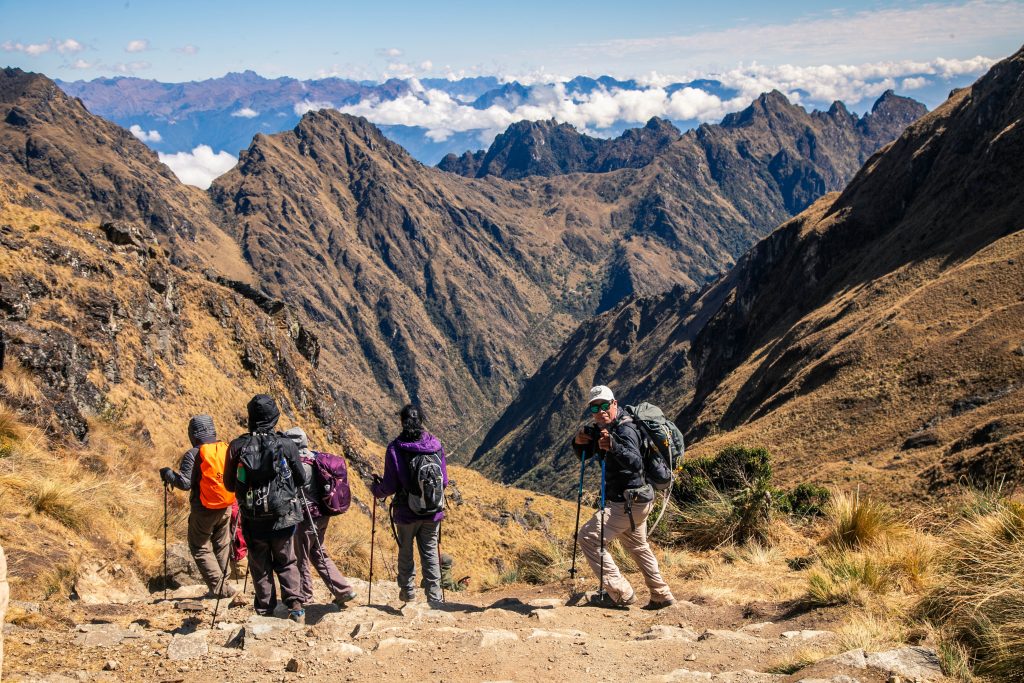
Salkantay Trekking in Peru
The Salkantay trek, often known as the “Salkantay Trek,” is a popular trekking route in Peru that takes you through breathtaking and diverse landscapes, culminating in a visit to the iconic Machu Picchu citadel.
- Duration: 4 to 5 days
- Difficulty Level: Moderate to challenging
- Altitude: 4,600 meters above sea level
- Route: The Salkantay trek usually starts in Mollepata and ends at the Aguas Calientes train station, providing access to Machu Picchu. Along the route, hikers enjoy spectacular views of the Salkantay snow-capped mountain, which rises to over 6,270 meters.
- Accommodation: Various accommodation options are available, ranging from camping in the midst of nature to stays in hostels or local houses. Some agencies offer additional amenities, such as hot showers.
- Permits: No special permit is required.


Rainbow Mountain Trekking in Peru
The “Rainbow Mountain” trek, also known as “Vinicunca” or “Seven-Color Mountain” (Winikunka in Quechua), is a popular trekking route in the Peruvian Andes. This trek is famous for taking hikers to a mountain with a spectacular palette of natural colors, caused by minerals and sediments in the geological layers.
- Duration: 1 day
- Difficulty Level: Moderate difficulty
- Altitude: 5,000 meters above sea level
- Route: The trek begins in the village of Cusipata and heads towards the serene Red Valley, where the ascent to Rainbow Mountain begins. Along the way, hikers enjoy panoramic views of Andean landscapes and surrounding mountains.
- Accommodation: Since the trek is completed in one day, there’s no need to camp. However, you can find accommodation in Cusco or the nearby town of Pitumarca.
- Permits: No special permit is required for this trek.
Trekking in Peru provides an opportunity to explore diverse natural landscapes, learn about the country’s rich history, and appreciate its vibrant culture. Whether you’re interested in the Inca Trail, Salkantay Trek, or Rainbow Mountain trek, you’ll have the chance to experience the beauty and wonder of the Andes Mountains and connect with the ancient and modern heritage of Peru.
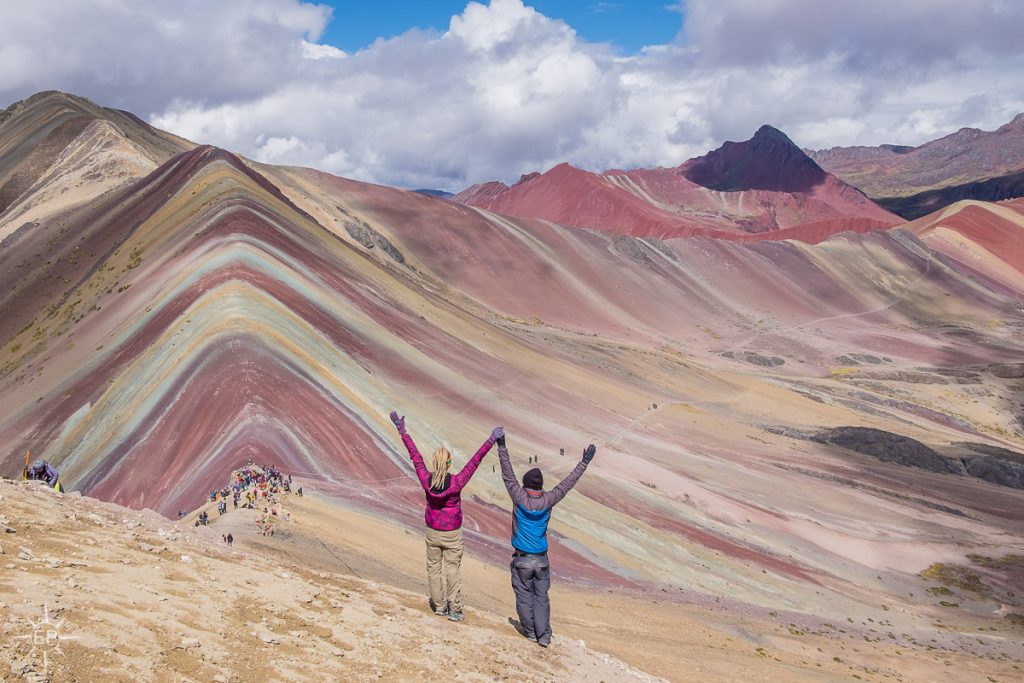
Ausangate Trekking in Peru
The “Ausangate” trek is a spectacular trekking adventure in the Cusco region of Peru. This hike is known for taking hikers around the stunning Ausangate mountain, the highest mountain in the Andes of the Cusco region and one of the most impressive peaks in all of Peru.
- Duration: 4 to 7 days
- Difficulty Level: Moderate to challenging
- Altitude: 5,000 meters above sea level
- Route: The Ausangate trek typically starts in the town of Tunqui, which is about a 3-hour drive from Cusco. Along the hike, hikers experience a variety of landscapes, including valleys, turquoise lakes, rock fields, snow, and glaciers.
- Accommodation: During the hike, hikers camp in designated campsites or in tents. Accommodations are basic, and temperatures can be very cold at night.
- Permits: To do the Ausangate trek, it is necessary to hire a local travel agency to handle permits and logistics.

Choquequirao Trekking in Peru
The “Choquequirao” trek is an exciting trekking adventure that takes you to one of the most fascinating and less-visited archaeological sites in Peru. Choquequirao is often referred to as the “lost sister” of Machu Picchu due to its architectural similarities and location in the Peruvian Andes mountains.
- Duration: 3 to 5 days
- Difficulty Level: Moderate to challenging
- Altitude: 3,000 meters above sea level
- Route: The Choquequirao trek usually begins in the town of Cachora, which is about a 4-5 hour drive from the city of Cusco. From Cachora, hikers descend into the Apurímac River canyon and then ascend to Choquequirao. The hike offers stunning views of the mountains and the canyon.
- Accommodation: During the hike, hikers camp in designated campsites. Conditions are basic, and temperatures can be cold at night.
- Permits: Like other treks in Peru, it is necessary to hire a local travel agency to manage permits and logistics. The trek passes through protected areas and local communities, so it is essential to respect local regulations and agreements.
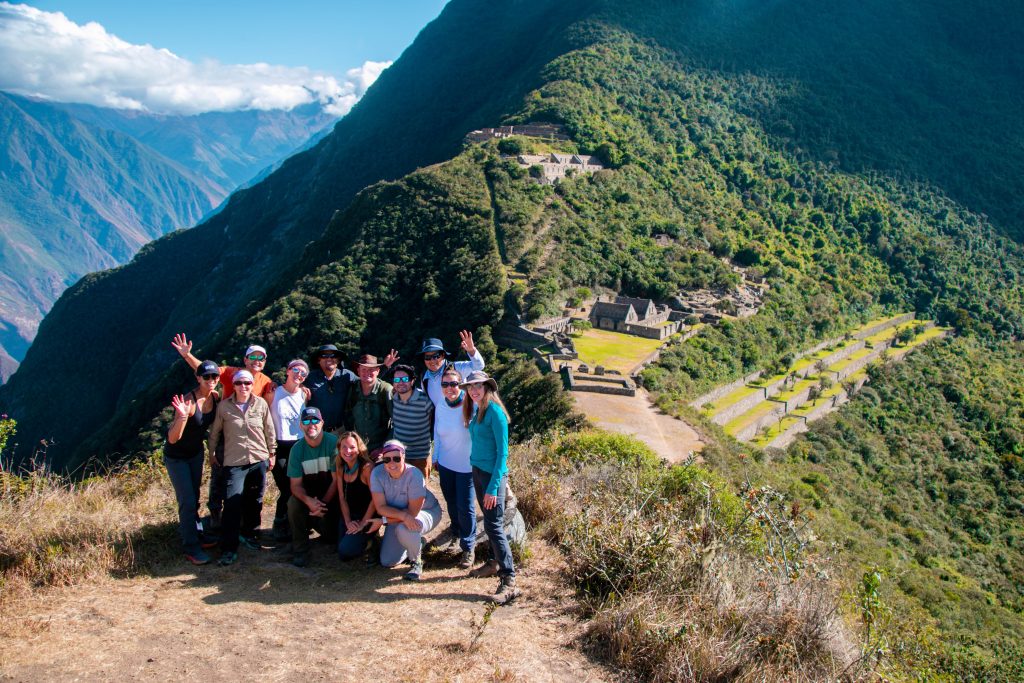
Vilcabamba Trekking in Peru
The Vilcabamba trek, often known as the “Vilcabamba Trek,” is a trekking route that takes you through the remote and beautiful Vilcabamba region in the Peruvian Andes. This trek is a less-traveled alternative to the Inca Trail and allows you to explore stunning landscapes and ancient archaeological sites.
- Duration: The Vilcabamba trek is typically completed in a period of 4 to 5 days, although shorter options are available.
- Difficulty Level: Moderate to challenging
- Altitude: 4,000 meters above sea level
- Route: The Vilcabamba trek usually starts in the town of Huancacalle or in Cusco, depending on the route you choose. Along the route, hikers enjoy mountainous landscapes, cloud forests, and river crossings.
- Accommodation: During the trek, hikers camp in designated campsites or stay in mountain refuges. accommodations are basic, and temperatures can be cold at night.
- Permits: Like other treks in Peru, it is necessary to hire a local travel agency to manage permits and logistics. The trek passes through protected areas and local communities, so it is essential to respect local regulations and agreements.
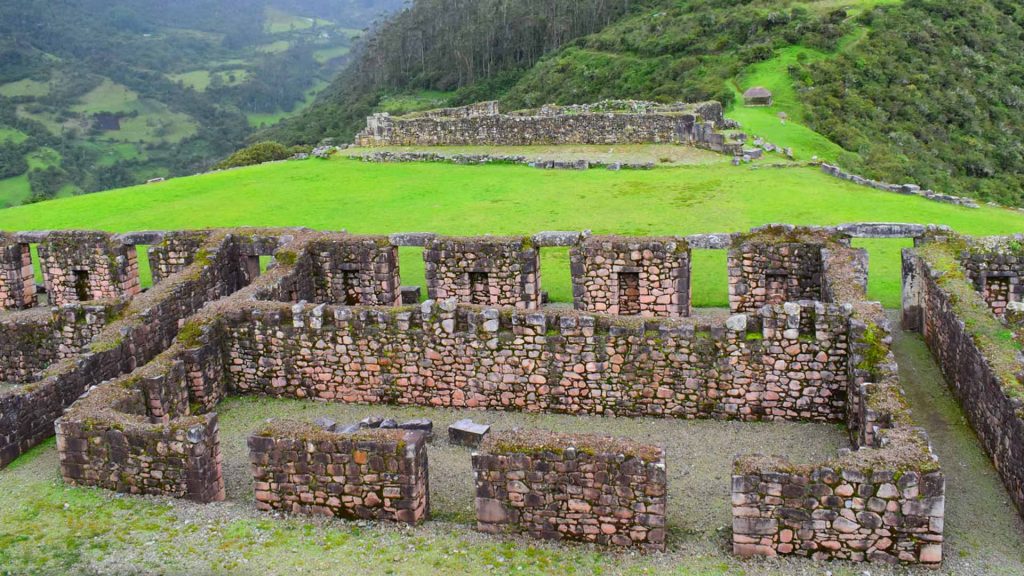
Santa Cruz Trekking in Peru
The Santa Cruz trek is one of the most popular trekking routes in Huascarán National Park, located in the Ancash region of Peru. This trek is known for taking hikers through stunning mountain landscapes in the Cordillera Blanca, with the opportunity to enjoy panoramic views of snow-capped mountains, valleys, and crystal-clear lakes.
- Duration: 3 to 4 days
- Difficulty Level: Moderate
- Altitude: 4,750 meters above sea level
- Route: The Santa Cruz trek usually starts in the city of Huaraz, which serves as the gateway to the Cordillera Blanca. From Huaraz, hikers travel to the town of Cashapampa, where the trek begins. Along the route, you’ll enjoy spectacular views of mountains like Alpamayo, Taulliraju, and Huascarán, the highest mountain in Peru. The highlight of the trek is the Punta Unión Pass, which offers stunning panoramic views.
- Accommodation: During the trek, hikers camp in designated campsites along the route.
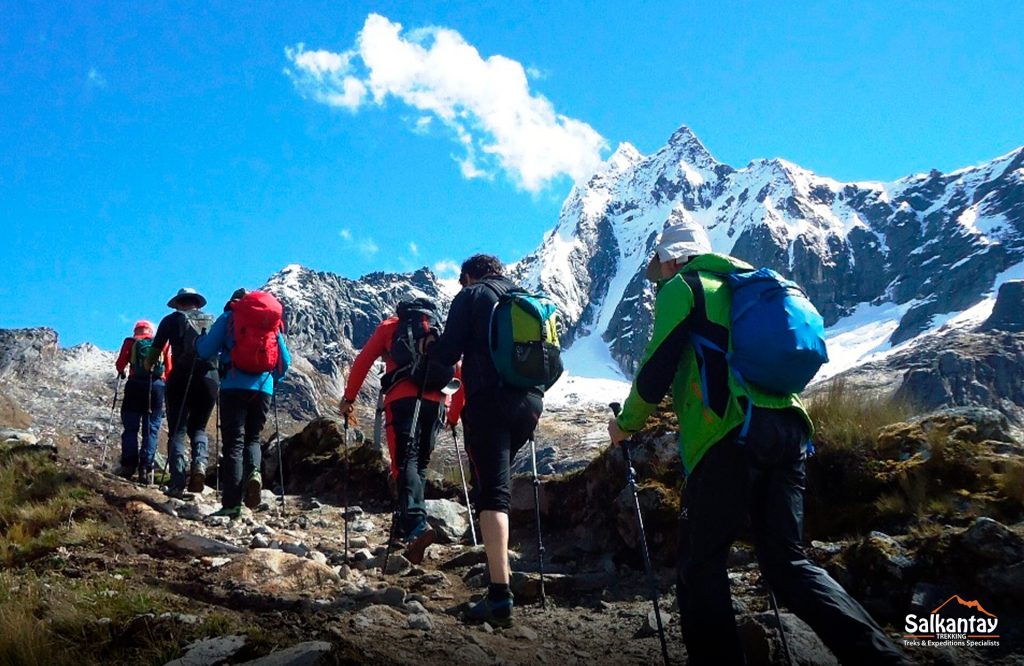
Laguna 69 Trekking in Peru
The Laguna 69 hike is one of the most popular trekking routes in Huascarán National Park, in the Áncash region of Peru. This hike is known for taking hikers to a turquoise crystal-clear lake located in the high mountains of the Cordillera Blanca. Here’s detailed information about the Laguna 69 hike:
- Duration: One day
- Difficulty Level: Moderate
- Altitude: 4,600 meters above sea level
- Route: The Laguna 69 hike typically starts in the city of Huaraz, which is the gateway to the Cordillera Blanca. From Huaraz, hikers travel to Huascarán National Park, where the hike begins. Along the way, you’ll enjoy breathtaking mountain landscapes, passing through valleys and queuña forests. The highlight is reaching the beautiful Laguna 69, with its turquoise waters surrounded by snow-capped mountains.
- Accommodation: Since the Laguna 69 hike is completed in one day, there’s no need for camping. You can find accommodation in Huaraz.
- Additional Note: The classic version offers a one-day hike, but there are two- and three-day options as well. For more information, it’s recommended to research the route and tour operator options.


Colca Canyon Trekking in Peru
The Colca Canyon trek is an exciting trekking adventure that allows you to explore one of the world’s deepest canyons, the Colca Canyon, located in the Arequipa region of Peru. This canyon is famous for its stunning landscapes, Andean condor sightings, and the opportunity to experience the local culture of the canyon’s inhabitants. Here’s detailed information about the Colca Canyon trek:
- Duration: 2 to 3 days
- Difficulty Level: Moderate
- Route: The Colca Canyon trek usually starts in the towns of Cabanaconde or Chivay, which are the main entry points

Tips for Trekking in Peru
- Acclimatization: If your trek involves significant altitude changes, spend a few days in Cusco or another high-altitude location before starting your trek to acclimatize to the altitude.
- Physical Preparation: Ensure you are physically fit and prepared for the demands of the trek. Regular cardiovascular exercise and strength training can help improve your fitness level.
- Proper Gear: Invest in good-quality trekking gear and clothing suitable for the terrain and weather conditions.
- Guided Trek: Consider booking your trek through a reputable tour agency that provides experienced guides, transportation, and camping equipment. This ensures a safe and well-organized experience.
- Permits: If your trek requires a permit (e.g., the Inca Trail), book well in advance, as permits are limited and can sell out quickly.
- Weather: Be prepared for variable weather conditions, as the Andes can experience rain, sun, and cold temperatures, even in the same day.
- Leave No Trace: Follow Leave No Trace principles to minimize your impact on the environment. Respect the natural surroundings and local communities.
- Hydration and Nutrition: Stay well-hydrated and nourished during your trek. Carry a refillable water bottle and pack energy-rich snacks.
- Sustainable Travel: Choose eco-friendly and responsible travel options that promote sustainability and support local communities.
- Enjoy the Journey: Take time to appreciate the stunning landscapes, history, and culture of Peru. Trekking is not just about reaching your destination; it’s about the experiences along the way.
Remember that safety and responsible trekking practices are essential to protect both the natural environment and the well-being of the local communities. With the right preparation and mindset, trekking in Peru can be a memorable and transformative experience.








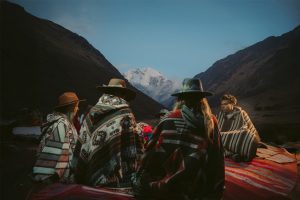
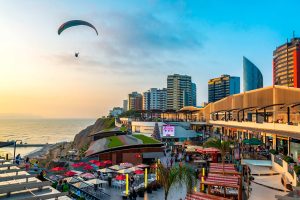


Leave A Reply